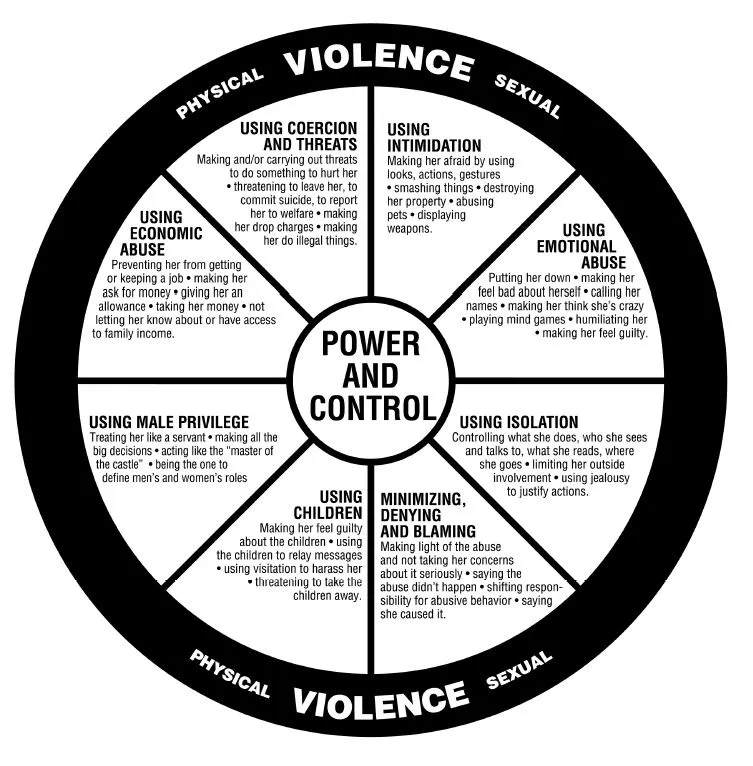Men are responsible for over 85% of criminal assaults and women are murdered 3.5 times more often than men in domestic homicides. This is a statistic that grounds the creators of the Domestic Abuse Intervention Program (DAIP), otherwise known as the Duluth Model (after the Minnesota town where it was developed).
The team behind the Duluth Model explicitly place men as the batterer, but recognize there are cases other than male-perpetrated violence against women. Battering in same-sex relationships, for example, are not male on female, but the model contends that the same societal power imbalances are evident in same-sex relationships and thus maintain the gendered language.
Power and Control Wheel
The Duluth team convened focus groups of women who had been abused and documented the most frequent behaviors or tactics used against these women (as illustrated in the wheel).
The wheel is broken into 8 categories:
1. Using Coercion and Threats
- Objective – make the abused do something that would ultimately hurt herself.
2. Using Intimidation
- Objective – make the abused afraid via intimidation tactics.
3. Using Emotional Abuse
- Objective – make the abused feel bad, guilty, or humiliated.
4. Using Isolation
- Objective – control the abuse by isolating her and what she can do.
5. Minimizing, Denying, and Blaming
- Objective – marginalizing the abused via blaming and minimization.
6. Using Children
- Objective – using children to achieve an abuser’s goals.
7. Using Male Privilege
- Objective – treat the abused as “less than.”
8. Using Economic Abuse
- Objective – prevent the abused from controlling her life economically.
The model’s proponents cite that 68% of men who have passed through the criminal justice system and are then sent to Duluth classes have not reappeared in the criminal justice system for over a stretch of 8 years. The model centers heavily on the experience of women, as referenced in the Power and Control Wheel. Men are not meant to be shamed by the intervention but rather challenged as to their entitlement to abuse.
Criticisms
One of the more cited criticisms comes from a 2018 UK study that showed more men than women as victims of force in partner abuse. Lesbian relationships, for example, have a higher level of violence than heterosexual relationships. Critics also cite an interview with one of the model’s originators, Ellen Pence. In 1999 Ms. Pence wrote that in many of her interviews with men she had made the mistake of presuming power and control laid at the root of their abuse. In fact, it hadn’t.
Despite the criticisms the Duluth Model remains one of the widest used models globally with respect to violent offenses and its goal in reducing victimization.



